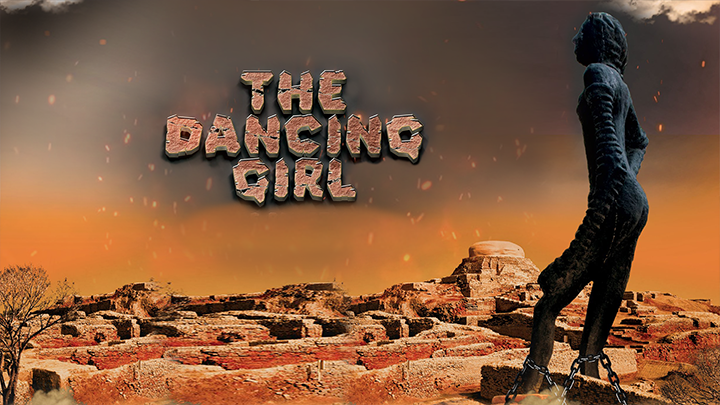Introduction
The Dancing Girl statue is a tiny bronze sculpture that depicts a young girl in a graceful dance posture. It is an ancient artifact that has attracted historians, archaeologists, and art fans for decades. One of the oldest and most mysterious ancient civilizations in the world, the Harappan Civilization, also known as the Indus Valley Civilization, is the source of this magnificent artwork.
The Dancing Girl has been interpreted in many different ways. While some experts believe that she is a dancer, others believe that she is a priestess or a goddess. The possibility that she is simply a young woman going about her daily life cannot be ruled out either. Whatever her identity, the Dancing Girl is a powerful and evocative image of a woman from the Indus Valley Civilization.
Discovery
Barely six inches tall, the statue was discovered in 1926 by Sir John Marshall, the then-Director-General of the Archaeological Survey of India. A remarkable work of art, the figurine depicts a young girl in a pose that implies she is dancing or performing some sort of ritual. She is unclothed, but her body is devoid of any sexuality. Instead, she is depicted as a young woman in the prime of her life, celebrating her beauty and her vitality.
The Dancing Girl provides us with a glimpse into the artistic and cultural practices of the Indus Valley civilization. The Indus Valley people were highly skilled artisans, and they produced a wide variety of objects, including jewelry, pottery, and seals. The celebrated statue is a testament to their artistic talent and their appreciation of the human form.
Ownership Dispute
The ownership of the Dancing Girl has been the subject of controversy for a number of years. Pakistan has claimed the statue as its own, arguing that it was found in its territory. The British Museum, which also has a claim to the statue, has contended that it acquired the statue through legal means and that it is better equipped to care for and display it. While the ownership of the Dancing Girl is a complex issue with no easy answers, there is no doubt that the statue is a significant cultural artifact that deserves to be preserved and displayed for all to see.
A RAVA Documentary Production
The statue is the centerpiece of a recent documentary produced by Rava Documentary. The Dancing Girl documentary deftly explores the history of the statue and the controversy surrounding its ownership, while providing insights into the artistic and cultural practices of the Indus Valley civilization.
Conclusion
The Dancing Girl statue is more than just a tiny bronze figurine; it serves as a window into the past and a tangible connection to a culture that existed more than 4,000 years ago. Scholars and enthusiasts alike continue to be curious and fascinated by it because of its alluring beauty and historical relevance. The statue of the Dancing Girl continues to stand as a timeless representation of human ingenuity, expression, and the enduing pursuit of knowledge about our distant past as we continue to investigate and unravel the mysteries of the Indus Valley Civilization.

